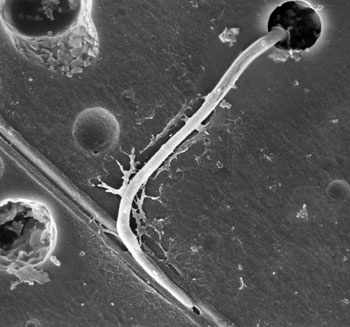Scientists in Aberdeen have shed new light on how some cells are able to steer their way around their surroundings carrying out crucial functions.
Many organisms have special cells which have to extend through their environment in order to reach their target so that they can perform key tasks.
One example of this process in people is the tiny projections that grow from nerve cells which help direct information to and from the brain. Another example can be seen in plants when pollen tubes extend long distances in order to carry out fertilisation.
Up until now researchers have puzzled over how these cell tips are able to actually steer their way so that they can extend to the left, right, up or down. Failure to steer properly would mean they were unable to perform their task.
But now scientists in Professor Gow's laboratory at the University of Aberdeen have discovered the mechanism within the cell tip that acts like a navigator to tell the tip which way to steer. Their findings are published today in key journal Current Biology.
Dr Alex Brand, the co-investigator on the research team, said: "This exciting new work brings us closer to understanding the processes that underlie how tip-growing cells reach their specific targets. Correct steering in growing cells is a function that is vital to the development and survival in nature of all multi-cellular organisms."
The researchers made their findings after studying a fungus called Candida albicans, which can cause disease in people.
Cell tips are known to have a high concentration of calcium which is important in guiding cell movement.
The scientists found that they could alter the ability of cells to change direction by increasing or decreasing the amount of calcium available. They also found that blocking or deleting the channels that transport calcium into the cells severely reduced the steering response.
Professor Neil Gow and Dr Brand, have recently been awarded a £327,839 grant from the Biotechnology and Biological Sciences Research Council to carry out further research.


